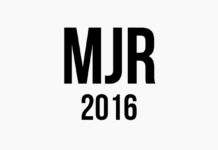Dear readers,
Nine million acres across the United States went up in flames in 2015, along with more than half of the Forest Service’s annual budget. Old growth forests in Washington and Oregon, peat bogs in Alaska and subdivisions in California fueled the fires.
Every year, reporters across the country recount the many stories of spreading wildfire.
Every year, many miss the bigger picture.
Contrary to public belief, the number of wildfires lighting up the West is not rising. Individual fires are, however, burning bigger and burning longer, and the Forest Service is left to play “catch up” instead of proactively managing the burns.
As journalists join this annual circus, they become trapped on a merry-go-round of coverage that is merely reactive instead of critical. Acres burned, communities evacuated, structures lost, repeat.
There is a practicality to such news that is often necessary, but it leaves little room to step away from the cycle and report deeper, see wider. Context falls short. But as renowned photographer and Guggenheim Fellow Donald Weber summarizes in his advice to storytellers, “the periphery is where it’s at.”
For our 2016 cover story, we sent staff writer Andrew Graham and photographer Jake Green out to find what journalists are missing as they cover the wildfire beat. Their story, “Lost in the Smoke,” is a dispatch from the periphery, a stab at getting a handle on some of that context.
In the wake of such a volatile fire season, as well as several metaphorical house fires closer to home, the word “burn” struck us as a singularly apt theme for all the features in our magazine. It led us to a vast and playful breadth of stories, a variety of literal and figurative paths to explore.
From a legacy publisher closing its capital bureau to freelancers negotiating business deals, we probed several ways journalists are feeling the burn.
We dove into culture desks along the Pacific Coast and the Rocky Mountain slopes where newsrooms are lighting up with reviews and commentary on legalized marijuana.
And we ourselves came under fire after the exposure of several errors in last year’s cover story.
This year’s staff took a hard look at our fact-checking system, analyzed what went wrong in MJR’s last issue and changed the workflow to ensure an even higher level of self-scrutiny. We expanded our social presence to include behind-the-scenes stories on Medium.com and reimagined our website to archive this and past issues’ stories and artwork.
After a semester of hard work, we feel ready to take the heat.
Celia Talbot Tobin, Managing Editor, Creative
Nicky Ouellet, Managing Editor, Editorial
Henriette Löwisch, Editor-in-Chief




